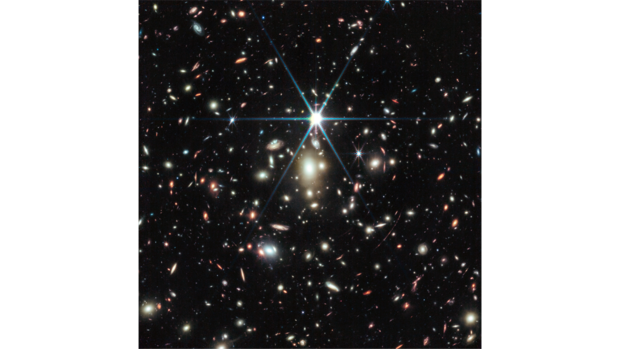Most distant star ever recorded is more than twice as hot as the sun, about a million times more luminous
The farthest star ever detected, located behind what NASA describes as "a wrinkle in space-time," is more than twice as hot as the sun and about a million times more luminous.
The James Webb Space Telescope has revealed new details about the star, dubbed Earendel, which was detected by the Hubble Space Telescope last year. Earendel, part of the Sunrise Arc galaxy, is only detectable because the galaxy cluster is so massive that it warps the fabric of space, producing a magnifying effect that astronomers can look through, according to NASA. In the months since Earendel's discovery, Webb has spotted other very distant stars, though none as far away as Earendel.
"The discoveries have opened a new realm of the universe to stellar physics, and new subject matter to scientists studying the early universe, where once galaxies were the smallest detectable cosmic objects," NASA said. "The research team has cautious hope that this could be a step toward the eventual detection of one of the very first generation of stars, composed only of the raw ingredients of the universe created in the big bang – hydrogen and helium."
Because of Earendel's distance from Earth, it took 12.9 billion years for its light to reach us, scientists said. The universe was less than a billion years old when the light was emitted. The star is now 28 billion lightyears away.
Based on colors observed with Webb, astronomers believe that Earendel, which means "morning star" or "rising light" in Old English, may have a cooler, redder companion star, too.
The previous oldest and most distant single star was observed by Hubble in 2018. The light from that star, named Icarus, took 9 billion years to reach Earth, according to NASA.
Victoria Strait, co-author of the initial study on Earendel, previously said that the old star offers scientists an opportunity to learn more about the past.
"As we peer into the cosmos, we also look back in time, so these extreme high-resolution observations allow us to understand the building blocks of some of the very first galaxies," she previously said.




